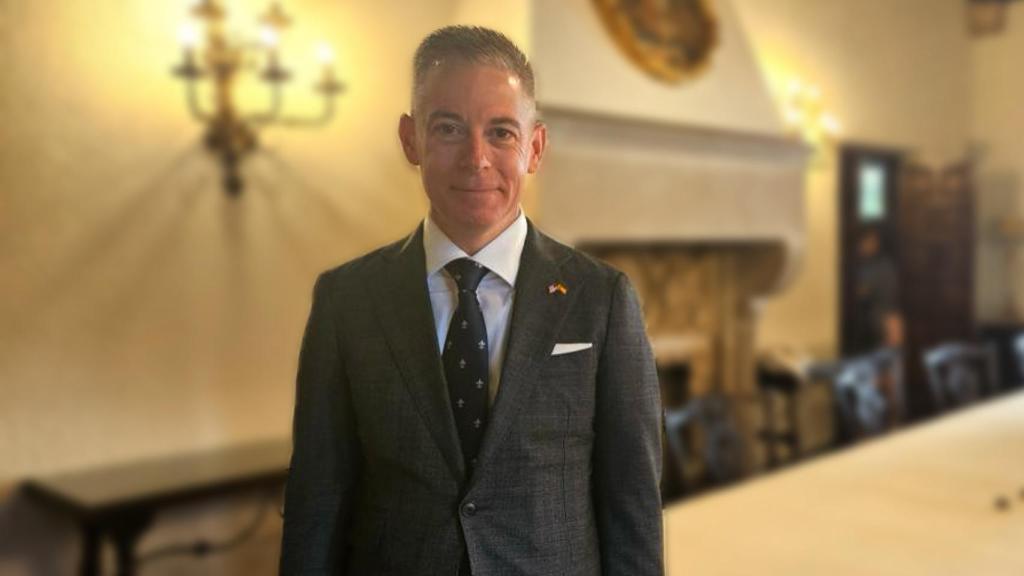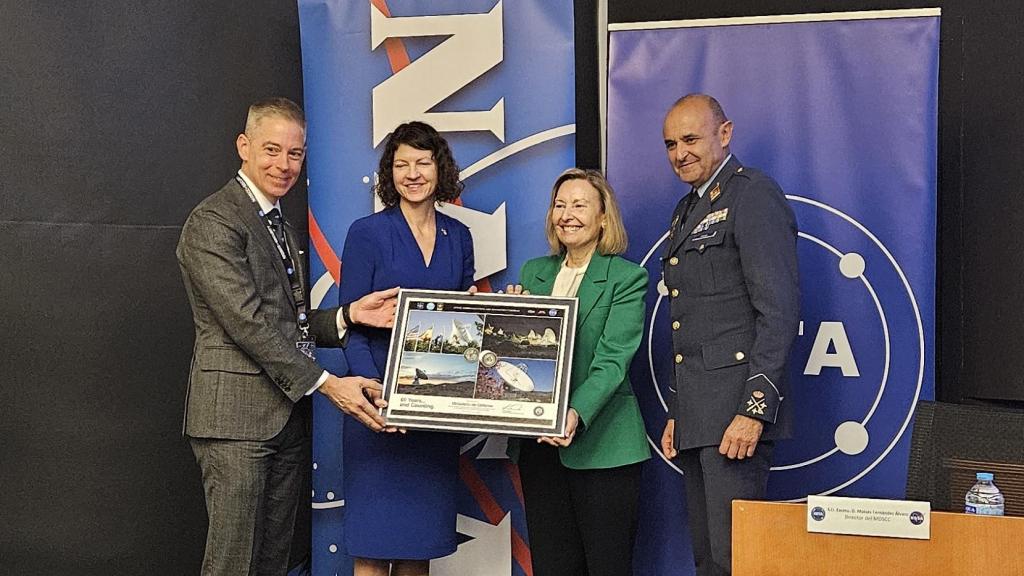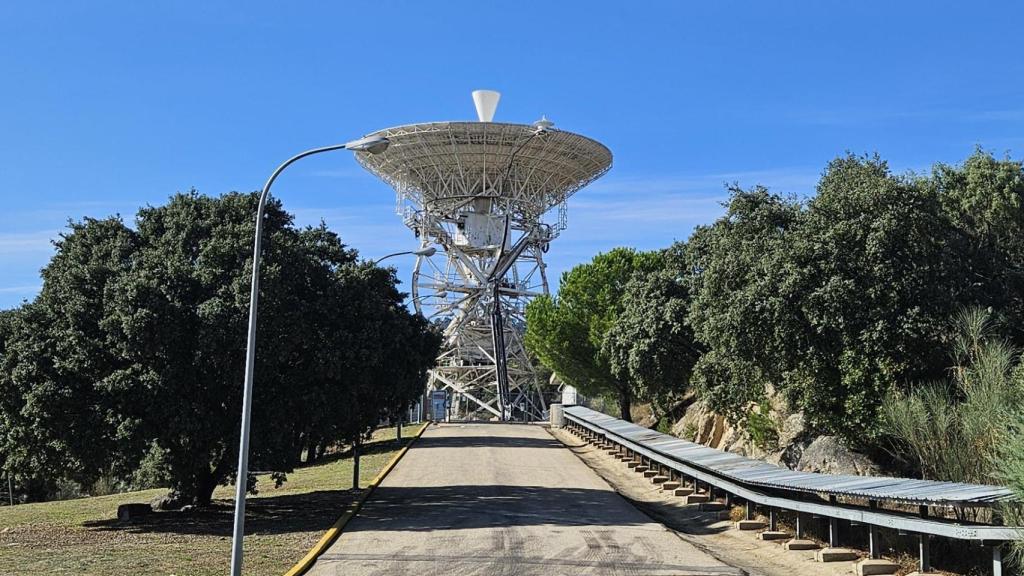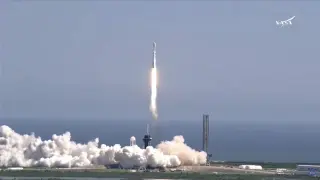“The current pace of launches is impressive, but it also poses a safety concern.”

It’s been 60 years since NASA opened a third space communications center in Spain for the missions it launches into deep space. Through the antennas of this station, in Robledo de Chavela, historical information was received, such as the first words of a man on the moon. To celebrate this anniversary and extend the collaboration for another 15 years, NASA representatives visited Spain and EL ESPAÑOL – Omicrono accompanied them that day.
Much has changed in the space industry since Neil Armstrong’s first steps were broadcast through Spanish antennas. Despite this, NASA continues to claim that their main goal is improve life on Earth through innovations resulting from space exploration.
Sandra Connelly, deputy associate administrator (DAA) for NASA’s Science Mission Directorate (SMD), reminds this newspaper that technology developed for space missions later served to improve medical treatments such as eye surgery. He agrees with Kevin Coggins, associate program administrator for NASA’s Space Communications and Navigation (SCaN) program, who answers the following questions and points out that Science carried out in space is an extension of science carried out on Earth.

Kevin Coggins, program manager for NASA’s Space Communications and Navigation (SCaN) program.
Omicrono
Responsible for the development, acquisition and management of NASA’s navigation and communications services, Coggins is one of the top managers of the DNS or Deep Space Network, to which Robledo de Chavela belongs and which is responsible for controlling, tracking and monitoring the operations and health of the spacecraft that NASA and its partners launched into space far from Earth’s orbit, for example, to the Moon or the rest of the planets of the solar system.
To maintain constant contact with various missions exploring space, NASA created three stations 60 years ago: the first in Goldstone (California), the second in Madrid (Spain) and the third in Canberra (Australia). Group stations that are already several decades old and need to be updated every day keep up the pace of the new space race, which has more and more participants.
The agreement between NASA and Spain for the Robledo de Chavela station has been extended for the next 15 years. What plans does Madrid Station have for the near future?
We currently have two major problems in the deep space network. The first is the need to send more data. New missions require greater speed and capabilities. When we send future astronauts to the Moon, we’ll want to see it on video, and that requires a lot of technical effort. Anyone who now has a cell phone will understand that sending a photo is easy, but a video can take much longer.

From left to right: Kevin Coggins, Ryan Harris (US Embassy), M. Amparo Valcarce, Secretary of Defense, and Julio Ayuso, INTA Director.
Omicrono
This increases as we travel longer distances to Mars. Therefore, we are working to update antennas with new technologies and achieve greater power and speed.
Do you mean optical communication technologies? In April, NASA tested the technology with the Psyche mission, sending a laser copy of engineering data to a distance of 226 million kilometers, or 1.5 times the distance between Earth and the Sun.
DNS uses radio frequency communications, but we are also experimenting with optical technology. Fiber optic cable is the internet connection used in homes because it has the greatest capacity to carry large amounts of data with very low latency.
Optical technology is good for the same reason, but without using cables, but by shooting a laser beam. The problem here is in the clouds, there are no problems with radio communications, but optical technologies need clear skies. For this reason, it is necessary to look for places where there are few clouds. There is still a long way to go before this technology works properly, but it will be an important component of future missions to Mars.

Abandoned antenna of the NASA station in Robledo de Chavela
Madrid
What about the second DNS task?
The second problem is the network itself, which is now 60 years old, some of the antennas are very old. This means constant maintenance and updating of technology. Ensuring that all antennas are always in working order and never fail is a challenge we face every day.
Our network efficiency is now over 97-98%, which is incredible. This means that Robledo operators are, in some cases, doing incredible work with decade-old antennas.

60-year-old technologies are being integrated into a new private space industry, with many countries pursuing their own space programs. Spain now also has its own companies.
Our philosophy is that we want to see the space economy grow, as well as the economy of our partner such as Spain. For example, we just awarded a contract to Intuitive Machines to deploy the first GPS system around the Moon. It is a private company that will offer navigation services to NASA and other users.
The end of the ISS (International Space Station) is also approaching. SpaceX received a contract to develop a vehicle that could take the station out of orbit. We even work with all the companies that design inflatable homes. This is all interesting because it represents a huge transformation taking place.
Within this new industry and the increasing pace of startups that all these companies promise to achieve. How to avoid possible oversaturation of space?
Of course, spatial stability. Every day there are more missions, before we were only focused on getting to the moon, now we need to make a schedule. Not all missions can use the antenna at the same time. This is an important part of the job, in addition to the need to have more potential, as I mentioned earlier.
Secondly, spatial sustainability involves managing traffic, monitoring litter, figuring out how to mitigate it, even down to how we use the limited resource of radio frequency spectrum. NASA created a sustainability division to ensure that everything it does is sustainable and safe, including recycling.
With the demise of the ISS and the rise of new spacefaring nations, it appears the world is entering a new era in which space cooperation is on the decline.
Collaboration still exists and is important. We work together with the Indian agency (ISRO) on its missions, and the Artemis program has reached a cooperation agreement involving up to 45 participants, the latest of which is Estonia. Chile will become the 46th country to join the EU. Many countries are working together to expand humanity’s capabilities in space. Our mission at NASA is to do science for humanity, to explore for humanity.
It’s not just about the space travel that we do on Earth, studying its minerals and using them for production, it extends into space on asteroids and planets, and that’s quite interesting.
